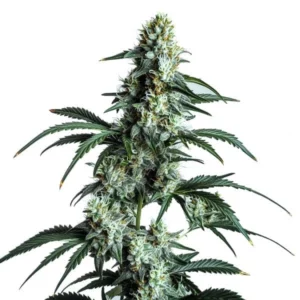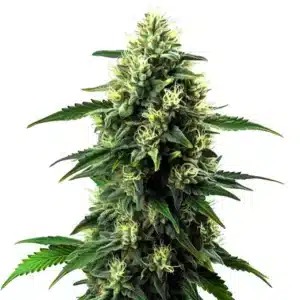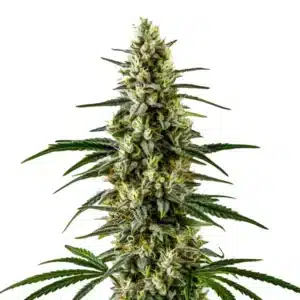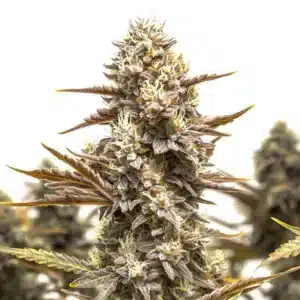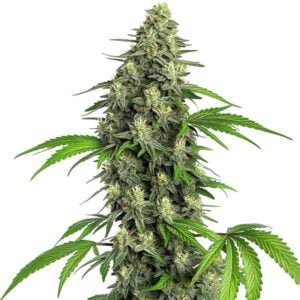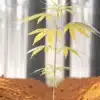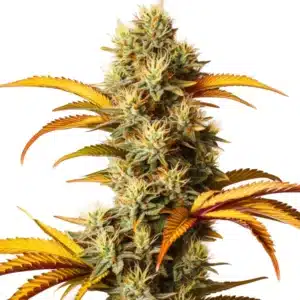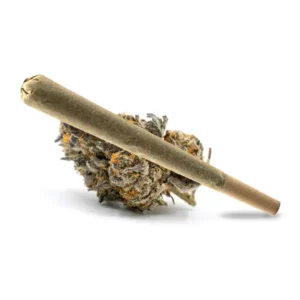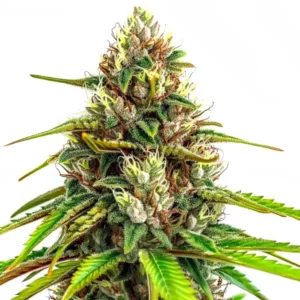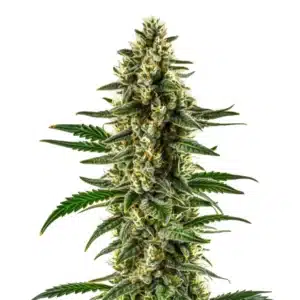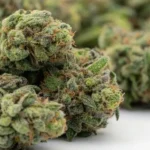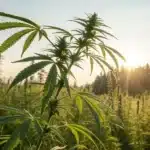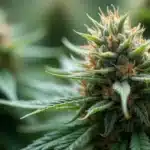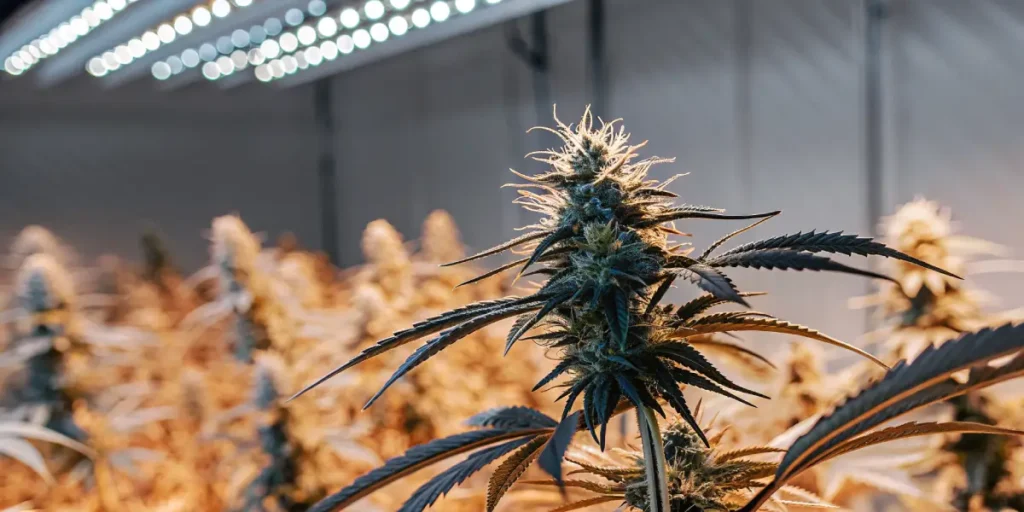
UV Light and Cannabis Plants: Benefits and Risks
When growing cannabis, many factors impact your success. One such factor is UV light. It often gets overlooked but plays a significant role in plant development. UV light is part of the sunlight spectrum. It’s split into three types: UVA, UVB, and UVC. Cannabis plants primarily respond to UVA and UVB. These rays can affect plant growth, yield, and even pest control.
Experienced growers often experiment with UV light to boost their plants’ health. However, the risks of UV exposure to cannabis plants also exist. Balancing these aspects is key. Let’s dive into how UV light interacts with cannabis plants, considering its benefits and potential downsides.
Recommended Strains
GG4
|
|
THC | 27% (High) |
|
|
Type | Feminized |
|
|
Yield | High |
|
|
Phenotype | 40% Indica / 60% Sativa |
Sour Diesel
|
|
THC | 22% - 25% (Medium) |
|
|
Type | Feminized |
|
|
Yield | High |
|
|
Phenotype | 30% Indica / 70% Sativa |
Choosing the right strains can make a difference. For instance, Blimburn Seeds offers excellent options like Gorilla Glue #4, known for its resilience and high yield. Knowing how UV light interacts with such strains can enhance your cultivation practices.
Benefits of UV Light for Marijuana Cultivation
UV light provides several benefits when cultivating cannabis. One major benefit is increased potency. UV light stimulates the production of trichomes, the tiny glands on cannabis flowers. These trichomes contain THC and other cannabinoids. More UV exposure means more trichome production, resulting in higher potency.
Another benefit is improved pest control. UV light can deter pests naturally. Some insects are sensitive to UV exposure and tend to avoid it. This reduces the need for chemical pesticides, allowing for a more organic growing process. Strains like Blue Dream from Blimburn Seeds are known for their robustness, which can be further enhanced through UV light.
Beyond potency and pest control, UV light contributes to more vibrant coloration in cannabis plants. The increased exposure can lead to more pronounced pigments, resulting in visually striking buds. This aesthetic appeal, coupled with the enhanced chemical profile, makes UV light a valuable tool for growers seeking both beauty and effectiveness in their crops.
Moreover, UV light can improve the overall resilience of cannabis plants. By mimicking the natural challenges plants face outdoors, UV light encourages them to develop stronger natural defenses. This can lead to healthier plants that are more resistant to environmental stressors, ultimately contributing to more reliable cultivation outcomes.
UV Spectrum Impact on Cannabis Yield
Knowing the UV spectrum’s impact on cannabis yield is crucial. The UVB part of the spectrum is particularly influential. It mimics the natural sunlight that cannabis plants would receive outdoors. This exposure stimulates more vigorous growth and can lead to larger yields.
Plants grown under UV light tend to have denser buds. This is because UV exposure encourages the plant to produce more natural sunscreen in the form of resin. More resin translates to heavier, denser buds. This is a significant benefit of UV light for marijuana cultivation, especially for those aiming for commercial yields.
UV spectrum impact on cannabis yield also extends to the plant’s efficiency in nutrient uptake. The stimulation from UVB encourages roots to absorb more nutrients, which can enhance the overall growth process. This efficient nutrient absorption is another reason why UV light is highly regarded in cannabis cultivation.
Additionally, the UV spectrum can influence the balance of cannabinoids and terpenes in cannabis plants. By optimizing UV exposure, growers can enhance not just the quantity, but also the quality of their harvests, tailoring the final product to meet specific consumer preferences and market demands.
Promos & Deals
Risks of UV Exposure to Cannabis Plants
While UV light offers benefits, it also poses risks. Excessive UV exposure can stress cannabis plants. This stress may result in stunted growth and reduced yields. It’s crucial to monitor UV levels carefully to prevent overexposure.
Another risk involves potential damage to plant tissues. High UV levels can lead to leaf burn, which affects photosynthesis. Damaged leaves mean less energy for the plant, impacting overall health. It’s important to find the right balance to avoid these issues.
UV light effects on cannabis plant growth must be managed to prevent these risks. Overexposure not only impacts growth but can also compromise the plant’s immune system, making it more susceptible to diseases. This highlights the need for careful calibration of UV light levels during cultivation.
Furthermore, prolonged excess UV exposure can degrade soil health over time. The intense UV rays can alter the microbial balance in the soil, which can have a cascading effect on plant health. This emphasizes the importance of knowing the risks of UV exposure to cannabis plants and implementing strategies to mitigate them.
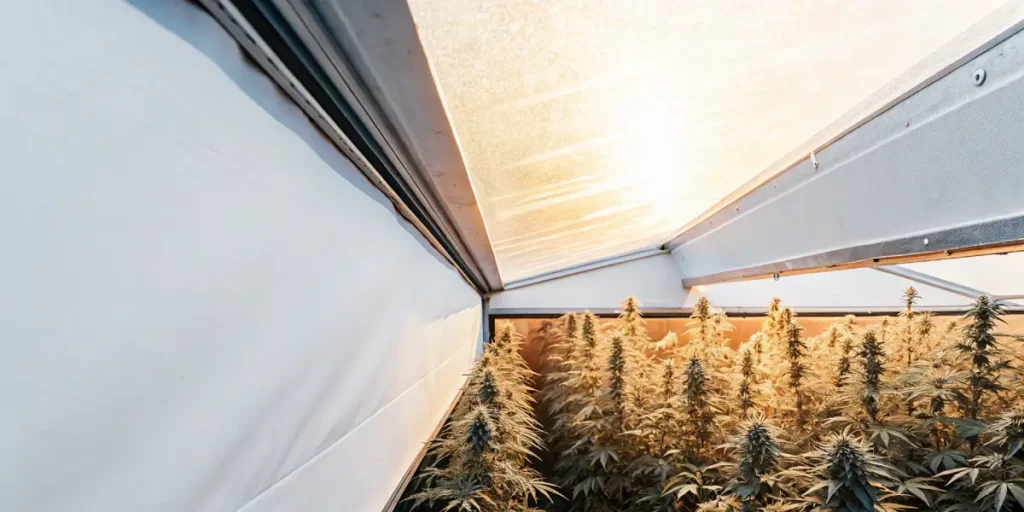
Managing UV Light Effects on Cannabis Plant Growth
Managing UV light effects on cannabis plant growth requires attention to detail. Start by gradually introducing UV light to your plants. This helps them adapt without shock. Use UV lamps that allow you to control intensity and duration.
Positioning is also important. Ensure the UV light is at an appropriate distance from the plants. Too close can cause damage, while too far may not provide the desired benefits. Monitoring plant response is key. Adjustments may be necessary depending on the strain and growing conditions.
Utilizing proper equipment, like timers and light meters, helps maintain optimal UV exposure. These tools enable precise control over the environment, ensuring your cannabis plants thrive without experiencing negative effects.
Another important aspect of managing UV light exposure is understanding the specific needs of different strains. Some may require more intense UV exposure, while others thrive under more moderate conditions. Tailoring your approach based on the specific characteristics of your plants will yield the best results.
Real-Life Examples and Practical Tips
In real-life scenarios, growers find that UV light impacts cannabis cultivation in diverse ways. For instance, introducing UV light during the flowering stage can significantly boost resin production. This results in a more potent final product.
Practical tips include using UV light sparingly during the vegetative stage. This helps prevent unnecessary stress while still preparing plants for later stages. Gradual increase during flowering maximizes benefits without overwhelming the plants.
Another practical tip is to monitor the UV index if growing outdoors. This allows growers to anticipate natural UV levels and adjust artificial exposure accordingly. Combining natural and artificial sources can optimize UV benefits for cannabis plants.
Additionally, utilizing reflective surfaces in your grow space can enhance the effects of UV light. By reflecting UV rays back onto the plants, you can maximize exposure without increasing the intensity of your light sources, creating an efficient growing environment.
Choosing the Right Strains for UV Exposure
Choosing the right strains is crucial when implementing UV light. Some strains naturally handle UV exposure better. Blimburn Seeds offers a variety of strains suitable for UV exposure, such as Gorilla Glue #4, Blue Dream, and Sour Diesel.
These strains are known for their high resilience and ability to thrive under varied light conditions. They offer a good balance of potency and yield, making them ideal choices for UV-enhanced cultivation.
Experimenting with different strains can help identify which perform best under UV light. This tailored approach ensures you get the most out of your cannabis cultivation efforts.
It’s also beneficial to consult with other growers and gather insights about their experiences with specific strains under UV light. This community knowledge can guide your decisions and help you avoid potential pitfalls associated with UV light and cannabis plants.
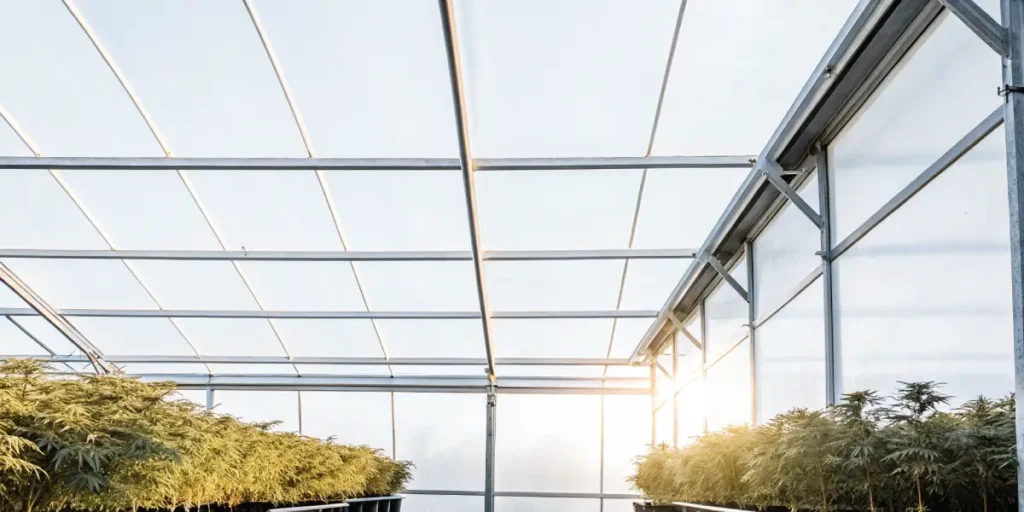
FAQs: UV Light and Cannabis Plants
How does UV light affect cannabis plant growth?
UV light affects cannabis plant growth by enhancing trichome production. This leads to higher potency levels. It also influences the plant’s natural defenses against pests, improving overall resilience. However, the effects vary depending on the strain and growing conditions.
Monitoring the amount of UV light exposure is crucial. Too much can stress the plants, leading to stunted growth and reduced yields. Growers must balance UV levels to ensure optimal growth without causing harm.
Additionally, UV light effects on cannabis plant growth may vary with the growth stage. For example, plants might require different UV levels during vegetative and flowering stages. Knowing these nuances helps in crafting a customized growth strategy that leverages the full benefits of UV light.
Moreover, integrating UV light with other growth factors, such as temperature and humidity control, can enhance its positive effects. This holistic approach ensures that the plants not only grow optimally but also maintain their health and stability throughout their lifecycle.
What are the benefits of UV light for marijuana cultivation?
The benefits of UV light for marijuana cultivation include increased potency and improved pest control. UV exposure encourages trichome production, resulting in more potent cannabis. It also deters pests, reducing the need for chemical interventions.
Growers often use UV light to mimic outdoor conditions, leading to healthier plants and larger yields. Selecting the right strains and managing UV exposure carefully maximizes these benefits.
Furthermore, using UV light can enhance the fragrance and flavor profile of cannabis. The increased production of terpenes, which are responsible for aroma and taste, is another benefit of UV light for marijuana cultivation.
Incorporating UV light also supports a more sustainable cultivation approach. By reducing the reliance on pesticides and promoting natural growth processes, growers can produce cannabis that is not only high-quality but also environmentally friendly.
What are the risks of UV exposure to cannabis plants?
Risks of UV exposure to cannabis plants include stress and tissue damage. Excessive UV levels can lead to leaf burn, impacting photosynthesis and overall plant health. This can reduce yields and potency.
It’s essential to manage UV exposure carefully. Using equipment like timers and light meters helps maintain appropriate levels, minimizing risks while maximizing benefits.
Overexposure to UV light can also lead to genetic mutations in cannabis plants. While rare, these mutations can affect plant stability and consistency, posing challenges for growers aiming for uniformity in their crops.
Additionally, improper UV management can lead to increased water stress in plants. High UV levels can elevate transpiration rates, necessitating more frequent watering and careful monitoring of plant hydration.
How does the UV spectrum impact cannabis yield?
The UV spectrum, particularly UVB, impacts cannabis yield by stimulating growth and resin production. This leads to denser, heavier buds. The right balance of UV light can significantly enhance yield and quality.
Strains like Sour Diesel respond well to UV exposure, producing larger, more resinous buds. Adjusting UV levels according to the growth stage helps achieve the best results.
The UV spectrum impact on cannabis yield is also evident in the plant’s structural integrity. UV exposure can strengthen stems and branches, supporting heavier buds and reducing the risk of breakage during the flowering phase.
Additionally, understanding the UV spectrum’s role in plant metabolism can lead to more efficient nutrient management. By optimizing UV exposure, growers can align plant metabolic processes with nutrient availability, boosting overall growth efficiency.
Can UV light help with cannabis pest control?
UV light can aid in cannabis pest control by deterring certain insects. Some pests are sensitive to UV exposure and prefer to avoid it. This natural deterrent reduces reliance on chemical pesticides.
Implementing UV light as part of an integrated pest management strategy can enhance plant health and vigor. It offers a more sustainable approach to pest control, benefiting both plants and growers.
UV light and cannabis pest control benefits extend to fungal and bacterial pathogen management. UV exposure can inhibit the growth of certain pathogens, contributing to healthier plants and reducing the need for fungicides.
Furthermore, using UV light strategically can disrupt pest life cycles, preventing infestations before they establish. This proactive approach to pest management is a key advantage of incorporating UV light into cannabis cultivation practices.



